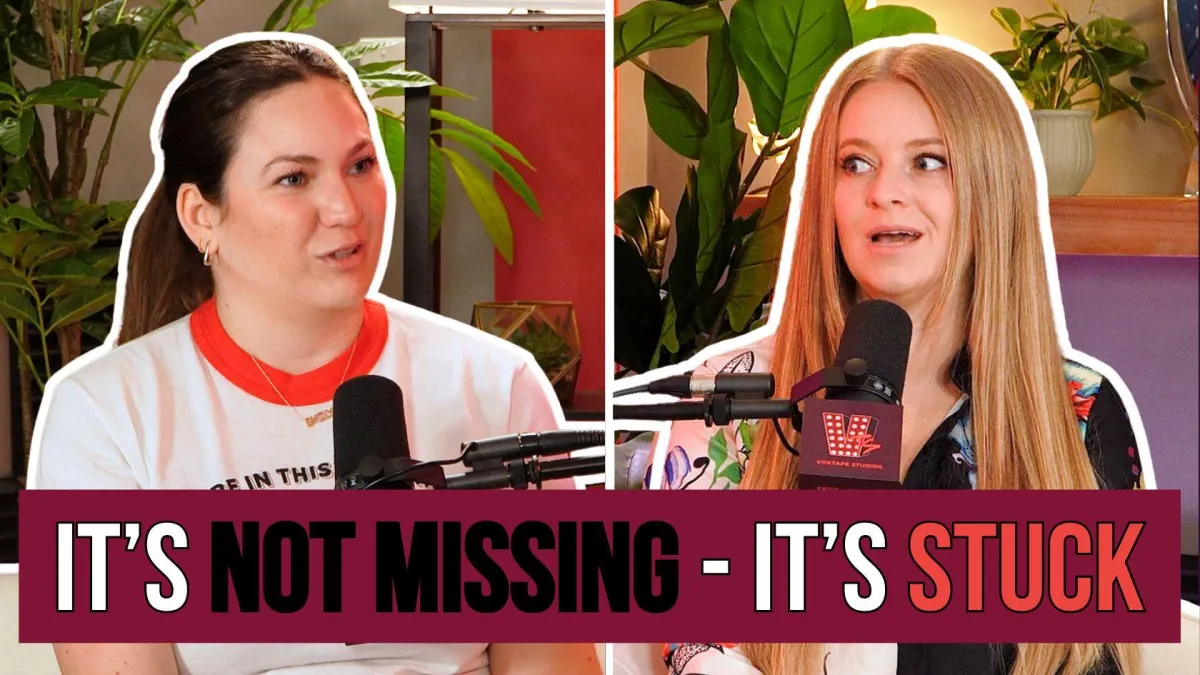
Unlocking Vibrato: Why Forcing It Won’t Work
Vibrato is something almost all singers want to master, yet it gets overcomplicated. It’s not a move you need to master or a skill you have to “add on” to your singing. Instead, vibrato is what happens when your technique is working well—specifically when there's coordination, freedom, and balance in your system.
“Vibrato is that vibrating sound where we’re alternating technically between two pitches—but so close together that it doesn’t sound like it.”
It’s subtle. It’s natural. It’s what shows up when you're not holding back or locking up. So let’s have a look at what you can do if your vibrato just isn’t coming through or you’re having difficulties controlling it.
Straight Tone vs. Vibrato
When you hold a note, you’ve got two options:
Straight tone: a clean, steady pitch with no pitch variation
Vibrato: a subtle oscillation in pitch that adds life and dimension
“It’s that shake in your voice that gives it a fuller, bigger kind of effect… it adds sparkle, rounding, and pizazz.”
In some styles (like classical), vibrato shows up on nearly every note. In musical theatre, it’s often more selective and in pop styles it’s much more rare than most singers think—but the idea stays the same: vibrato adds motion, emotion, and richness.

Why Forcing It Doesn’t Work
Trying to make vibrato happen is where most singers go wrong.
Artificial vibrato—like jaw shaking, belly pulsing, or manual pitch sliding—just creates tension. And tension is vibrato’s enemy. If you’ve been doing those things and wondering why it still sounds fake or inconsistent, that’s why. The harder you try to create it, the more your body resists it.
This means that the first step to getting your vibrato out is releasing - especially letting go of any tension you might be experiencing in your jaw, tongue and/or neck. I created a whole post on releasing tension in those areas for singing in general and the same techniques apply here for vibrato. Check out this post here.
The “Silly Opera Singer” Trick
One of the most effective (and hilarious) ways to help vibrato show up?
“Just pretend like you’re a silly opera singer.”
Seriously. Playfulness is key.
When you loosen up and exaggerate, your voice stops gripping. You’re not faking vibrato—you’re creating the conditions that allow it to emerge naturally. It may feel ridiculous at first, but often, that freedom unlocks the very coordination you’ve been trying to control.
We also call this “primal sounds” in the world of singing - imitating a sound that your body naturally knows how to do like a siren or yelling. The trick is that your body already knows what to do. It’s when the mind starts overthinking that singing - including vibrato - gets harder to do. So the less you think - the more playful you are - the easier singing gets.
Try a Micro-Wiggle Exercise
If you want something concrete to try, Coach Emily recommends starting small:
Hold a note and gently pulse your pitch up and down just slightly—think less than a half step apart. Don’t try to sound fancy. Just explore the motion. Eventually, stop “doing” the wiggle, and let your voice remember the feeling.
That’s how vibrato starts to show up on its own.
What If Vibrato Still Isn’t Happening?
If your vibrato feels stuck, wobbly, or totally MIA, ask yourself:
Am I clenching my throat, jaw or abs?
Am I trying to push vibrato instead of allowing it?
Is my breath moving steadily, or is it held back or too much?
Try it in your head voice at either a really loud or really quiet volume
In most cases, vibrato isn’t missing—it’s just blocked. Remove the tension, and the coordination can finally show up.
I personally couldn’t get any vibrato for the first 7 years of my singing journey… I had way too much tension and no matter how many vibrato exercises I did, nothing worked. It wasn’t until my overall technique (aka releasing tension) got a lot better that my vibrato started to come through! Not only could I finally do it, it was then easier to sing with vibrato than without! So I needed to work on controlling it for a couple of months. I am telling you this to show you that it’s ok if it doesn’t happen right away. It might take a little bit of time. Just remember, the more you release the easier it gets.
Is It Really That Important?
I know, most singers are obsessed with learning vibrato… But the thing is, vibrato is not nearly as important as you think when you’re singing contemporary music. Listen to some of your favorite songs and see if you can identify where vibrato is happening. Chances are that there’s a lot less vibrato than you initially thought.
Of course that doesn’t mean you shouldn’t want to learn it - it definitely doesn’t hurt! But I also want you to know that vibrato is not the end all be all - just like riffing. Keep working at it and in the meantime just know that you’re not any less of a singer than the ones that have vibrato already.
🎧Want some extra help and more exercises for vibrato? Check out our full episode on our show From Singer To Artist below!
Prefer Listening To The Podcast On Your Favorite Platform? Listen Below.


